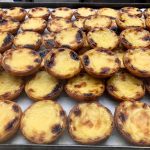There are a lot of amazing photos and videos of the Aurora Borealis, but nothing prepares you for the awe of actually seeing the spectacle for yourself. From November to March, you have a good chance to see the Northern Lights in destinations that are closest to the North Pole. After much research, we chose Iceland as our destination to chase the Northern Lights.
The Aurora is dazzling and mystifying. It is elusive and unpredictable. But if you are lucky enough to see it, it is an unforgettable experience.
TIPS
- Dress for the cold – multiple layers will help keep you warm
- Don’t forget your face – be sure to wear a scarf, ski mask, or balaclava along with a hat
- Hand warmers and foot warmers – these bits will get cold first
- If you wear contact lenses, you may want to wear your glasses. Contact lenses can get dry in the cold and cloud up – you don’t want anything hindering your view
- Get out of the city – light pollution from buildings and street lamps can make it more difficult to see the Aurora
- Check the forecast for Aurora predictions and cloud cover. Both conditions need to be optimal for your best chance of viewing. This site is a good resource: http://www.aurora-service.eu/aurora-forecast/
- Don’t expect to capture photos with your camera phone. You can get some images with a basic point and shoot camera, but you really want a good camera on a tripod to capture the lights
- Go with a professional photographer and guide. Not only do they know when and where to go, they will also be sure to capture what you see. The guys at Arctic Shots (http://www.arcticshots.is) are amazing photographers, super knowledgeable, and a lot of fun to hang out with!
- Manage your expectations. The lights are elusive and unpredictable. No one can guarantee if or when you will see the lights, even with the best forecasts and planning. Just be hopeful and enjoy the adventure!


 Thingvellir, Iceland
Thingvellir, Iceland 




Recent Comments